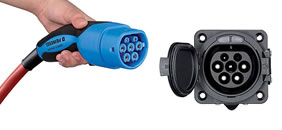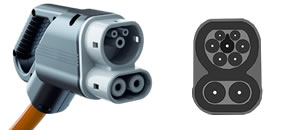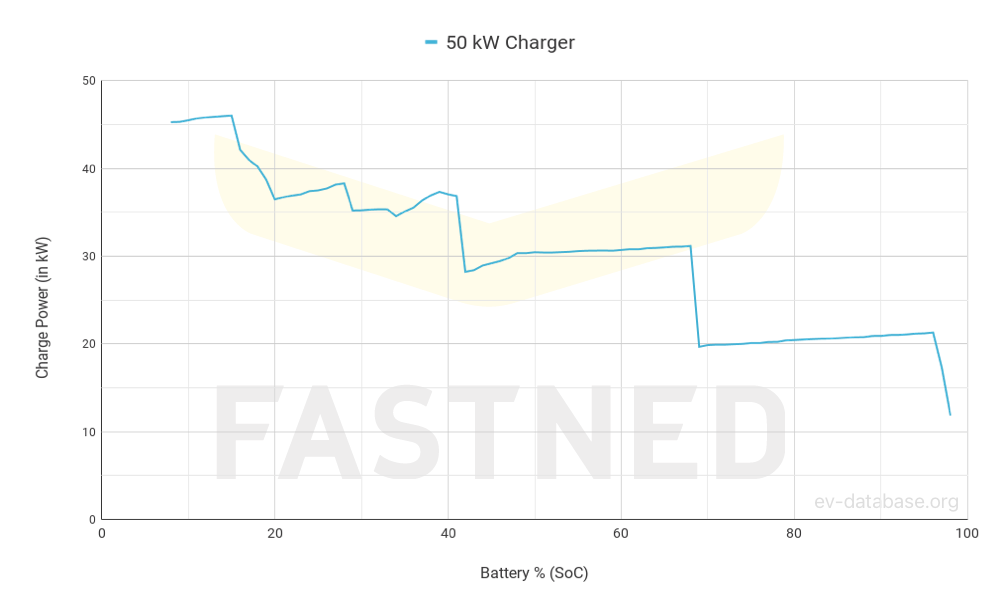Price from (last known)
£37,395
| Availability |
Not available to order |
| Available to order from |
September 2020 |
| Available to order until |
November 2023 |
| Annual VED |
£0 |
| Congestion Charge |
£11.50 |
| Insurance Group |
N/A |
Price shown is the last known On The Road price: it includes VAT, first year VED, vehicle first registration fee, number plates and delivery.
Real Range between 70 - 155 mi
| City - Cold Weather |
105 mi |
| Highway - Cold Weather |
70 mi |
| Combined - Cold Weather |
85 mi |
| City - Mild Weather |
155 mi |
| Highway - Mild Weather |
95 mi |
| Combined - Mild Weather |
120 mi |
Indication of real-world range in several situations. Cold weather: 'worst-case' based on -10°C and use of heating. Mild weather: 'best-case' based on 23°C and no use of A/C. For 'Highway' figures a constant speed of 70 mph is assumed. The actual range will depend on speed, style of driving, weather and route conditions.
Battery
| Nominal Capacity |
35.5 kWh |
| Battery Type |
Lithium-ion |
| Number of Cells |
192 |
| Architecture |
400 V |
| Warranty Period |
8 years |
| Warranty Mileage |
100,000 mi |
| Useable Capacity* |
28.5 kWh |
| Cathode Material |
No Data |
| Pack Configuration |
96s2p |
| Nominal Voltage |
355 V |
| Form Factor |
No Data |
| Name / Reference |
No Data |
Charging
Home / Destination
| Charge Port |
Type 2 |
| Port Location |
Front Side - Middle |
| Charge Power |
6.6 kW AC |
| Charge Time (0->105 mi) |
5h15m |
| Charge Speed |
21 mph |
Rapid Charging
| Fastcharge Port |
CCS |
| FC Port Location |
Front Side - Middle |
| Fastcharge Power (max) |
46 kW DC |
| Fastcharge Power (10-80%) |
32 kW DC |
| Fastcharge Time (10->84 mi) |
39 min |
| Fastcharge Speed |
110 mph |
| Autocharge Supported |
Yes |
Plug & Charge
| Plug & Charge Supported |
No |
Bidirectional Charging (V2X / BPT)
Vehicle-to-Load (V2L)
| V2L Supported |
No |
| Max. Output Power |
- |
| Exterior Outlet(s) |
- |
| Interior Outlet(s) |
- |
Vehicle-to-Home (V2H)
| V2H via AC Supported |
No |
| Max. Output Power |
- |
| V2H via DC Supported |
No |
| Max. Output Power |
- |
Vehicle-to-Grid (V2G)
| V2G via AC Supported |
No |
| Max. Output Power |
- |
| V2G via DC Supported |
No |
| Max. Output Power |
- |
Energy Consumption
EVDB Real Range
| Range |
105 mi |
| Vehicle Consumption |
271 Wh/mi |
| CO2 Emissions |
0 g/km |
| Vehicle Fuel Equivalent |
149 mpg |
WLTP Ratings
| Range |
138 mi |
| Rated Consumption |
277 Wh/mi |
| Vehicle Consumption |
207 Wh/mi |
| CO2 Emissions |
0 g/km |
| Rated Fuel Equivalent |
146 mpg |
| Vehicle Fuel Equivalent |
196 mpg |
Rated = official figures as published by manufacturer. Rated consumption and fuel equivalency figures include charging losses.
Vehicle = calculated battery energy consumption used by the vehicle for propulsion and on-board systems.
NOTE: The fuel equivalency figures are shown in IMPERIAL MPG. Figures in US MPG will differ significantly.
Real Energy Consumption between 184 - 407 Wh/mi
| City - Cold Weather |
271 Wh/mi |
| Highway - Cold Weather |
407 Wh/mi |
| Combined - Cold Weather |
335 Wh/mi |
| City - Mild Weather |
184 Wh/mi |
| Highway - Mild Weather |
300 Wh/mi |
| Combined - Mild Weather |
238 Wh/mi |
Indication of real-world energy use in several situations. Cold weather: 'worst-case' based on -10°C and use of heating. Mild weather: 'best-case' based on 23°C and no use of A/C. For 'Highway' figures a constant speed of 70 mph is assumed. The energy use will depend on speed, style of driving, climate and route conditions.
Safety (Euro NCAP)
| Safety Rating |
|
| Adult Occupant |
76% |
| Child Occupant |
82% |
| Rating Year |
2020 |
| Vulnerable Road Users |
62% |
| Safety Assist |
65% |
For more details on the safety rating of this vehicle, visit
euroncap.com
Dimensions and Weight
| Length |
3894 mm |
| Width |
1752 mm |
| Width with mirrors |
No Data |
| Height |
1512 mm |
| Wheelbase |
2538 mm |
| Weight Unladen (EU) |
1595 kg |
| Gross Vehicle Weight (GVWR) |
1870 kg |
| Max. Payload |
350 kg |
| Cargo Volume |
171 L |
| Cargo Volume Max |
861 L |
| Cargo Volume Frunk |
No Data |
| Roof Load |
0 kg |
| Tow Hitch Possible |
No |
| Towing Weight Unbraked |
0 kg |
| Towing Weight Braked |
0 kg |
| Vertical Load Max |
0 kg |
Miscellaneous
| Seats |
4 people |
| Isofix |
Yes, 2 seats |
| Turning Circle |
9.2 m |
| Platform |
No Data |
| EV Dedicated Platform |
No Data |
| Car Body |
Hatchback |
| Segment |
Supermini |
| Roof Rails |
No |
| Heat pump (HP) |
No |
| HP Standard Equipment |
- |
Company Car Tax Indication
Financial Year 2020-21
| BIK Tax Rate |
1% |
| P11D Value from |
£37,340 |
| Benefit in Kind (BIK) |
£373 |
| BIK @ 20% |
£6 pcm |
| BIK @ 40% |
£12 pcm |
| BIK @ 45% |
£14 pcm |
Financial Year 2021-22
| BIK Tax Rate |
1% |
| P11D Value from |
£37,340 |
| Benefit in Kind (BIK) |
£373 |
| BIK @ 20% |
£6 pcm |
| BIK @ 40% |
£12 pcm |
| BIK @ 45% |
£14 pcm |
Financial Year 2022-23
| BIK Tax Rate |
2% |
| P11D Value from |
£37,340 |
| Benefit in Kind (BIK) |
£747 |
| BIK @ 20% |
£12 pcm |
| BIK @ 40% |
£25 pcm |
| BIK @ 45% |
£28 pcm |
* = estimated value. Average energy consumption and range based on moderate drive style and climate. Real-life values may differ significantly. Pricing information might not be actual for some regions. No rights can be derived from the information on this site.



